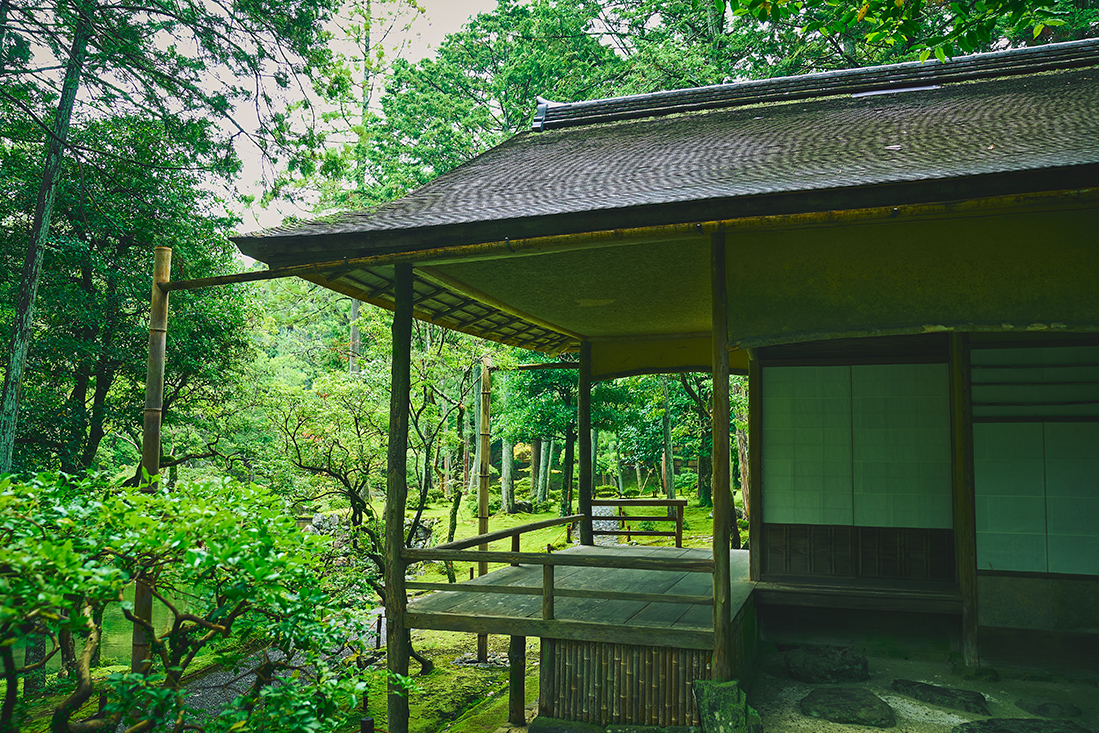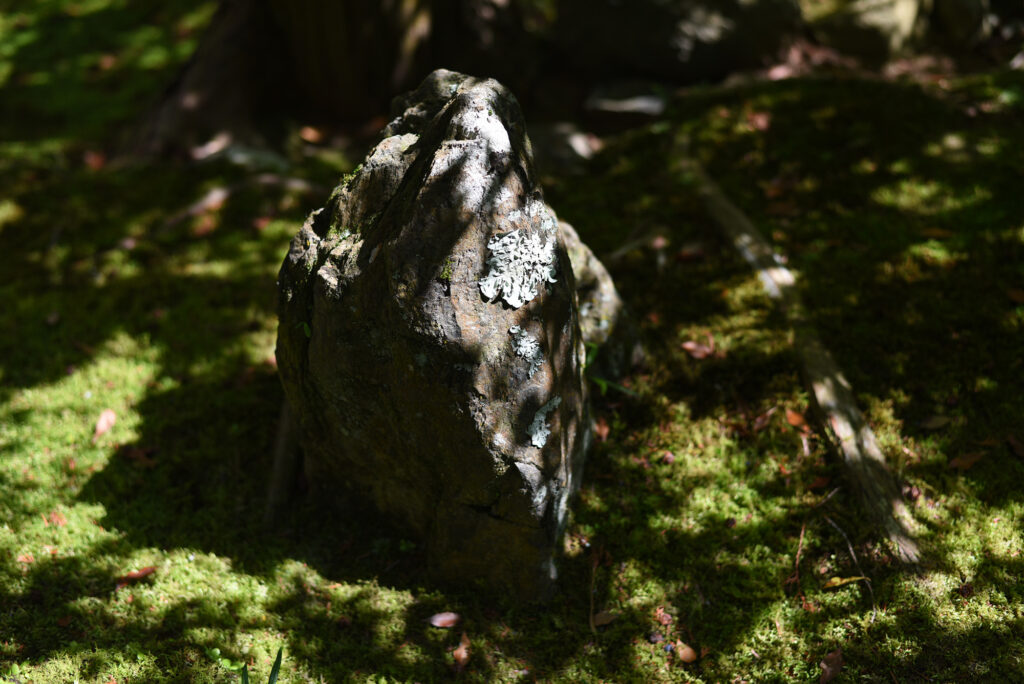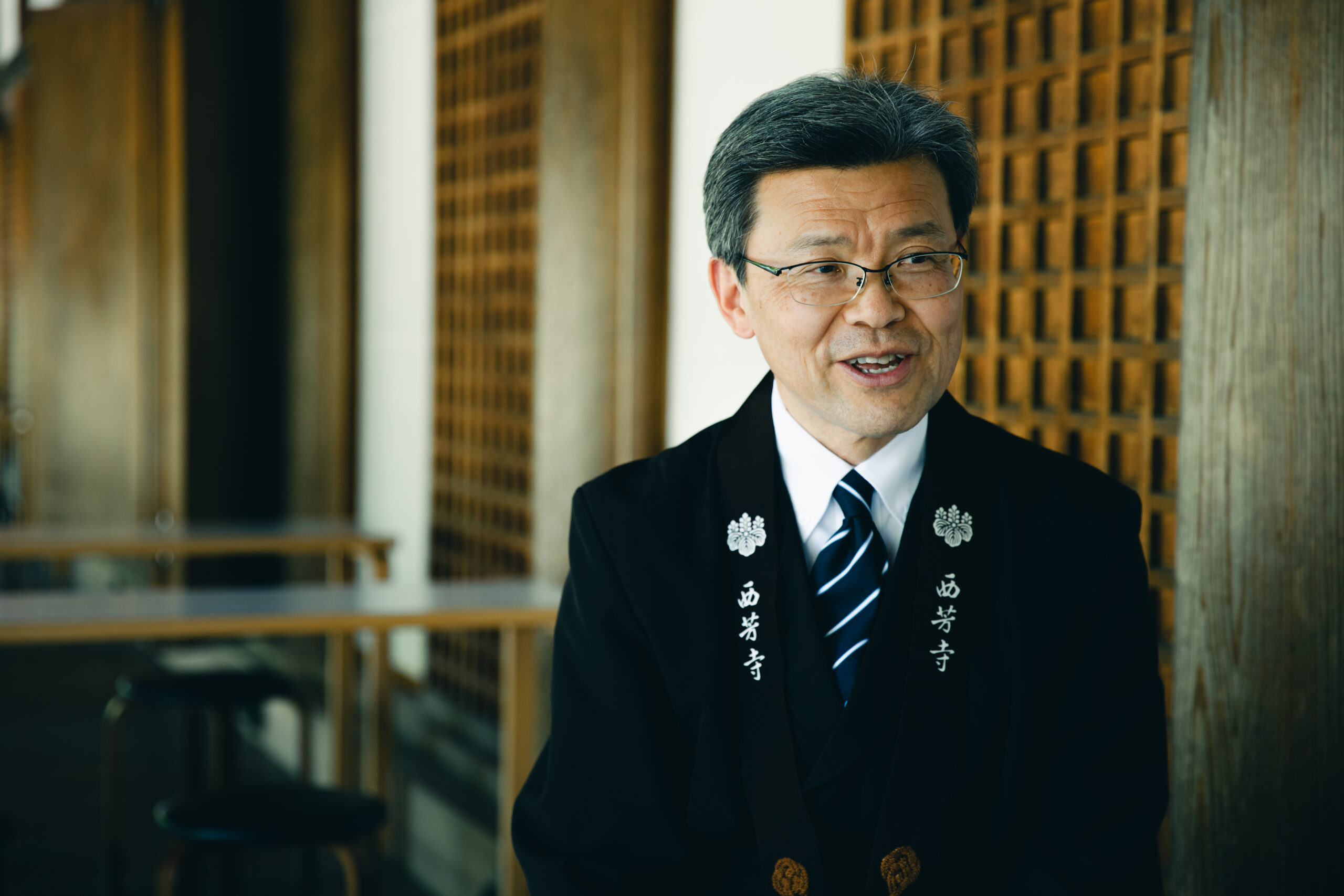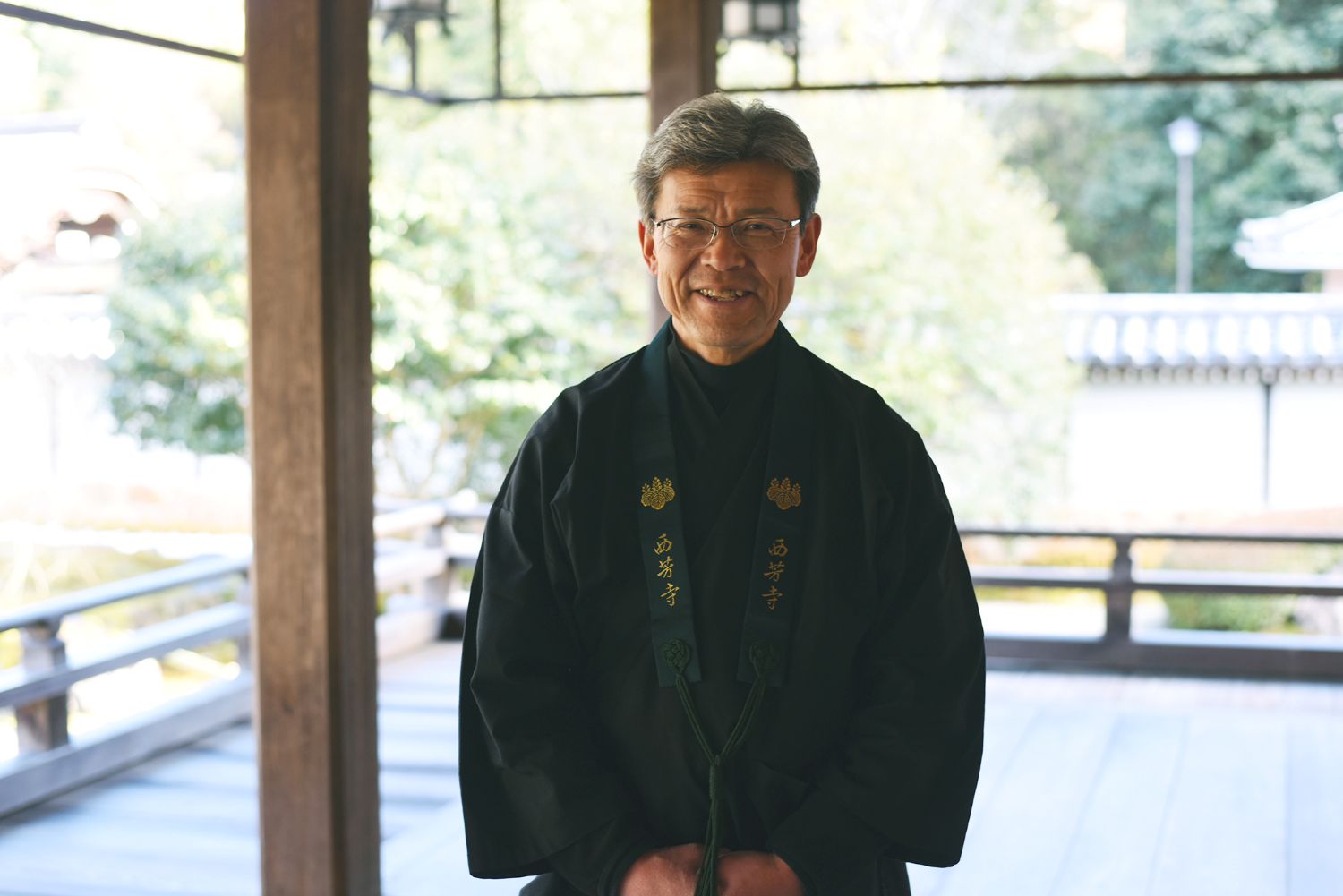2025.11.20
体露金風 西芳寺第十九景
ピーター・J・マクミラン
(翻訳家・詩人)
翻訳者であり詩人でもあるピーター・マクミラン氏が、西芳寺の魅力を綴る「体露金風 西芳寺」シリーズ。日本文化への造詣が深いピーター氏の感性と深い洞察が誘う、心の旅。ぜひ原文の美しい響きも、ご堪能ください。
西芳寺の執事と皆さんへ、感謝を込めて
冬は、私がお庭を眺めるのが好きな時期。今回は、西芳寺に40年近く勤めておられる谷口さんが、案内を担当してくださいました。谷口さんは、私が西芳寺とご縁をいただくきっかけになった方で、いつも大変温かく接してくださっています。ふたりでお庭を歩きながら、昔と現在のお庭の変化について話し合いました。
谷口さんから伺ったお話の一部を、紹介します。
昔は、西芳寺にお参りするためには、はがきで申し込む必要がありました。冬は参拝者がほとんどおらず、1組しか来なかった日もあります。申し込みなしで門まで来られた方もいれば、天候が悪かったり雪が激しかったりで、受付時間にお迎えにあがっても、誰もお見えにならないこともありました。
30数年前は、西芳寺の周辺には今ほど多くの住宅が建っておらず、大きな竹林がありました。当時は、冷たい風が吹くと秋風や寒風に竹林が揺れ、まるで山そのものが揺れているようでした。その光景は、寒々しくも、本当に美しかったんです。最近は、雪が減りました。今も寒くはありますが、昔ほどではありません。昔は地面が凍り、池の中では、朝日の清水という湧き水あたりで、何匹もの鯉が身を寄せ合い暖をとるような姿もよく目にしました。最近は、夏がひどく暑いうえに長い。秋が失われつつあるようにも感じます。
それから、冬の夕方ごろに庭園をひとりでまわっていると、怖いくらいに静かなことが多かったです。遠くを走る電車の音や西京極競技場の試合の歓声も、今よりよく聞こえたように思います。今は西芳寺の前の交通量が増え、物音が増えました。時々、騒音が問題になってきているように感じます。
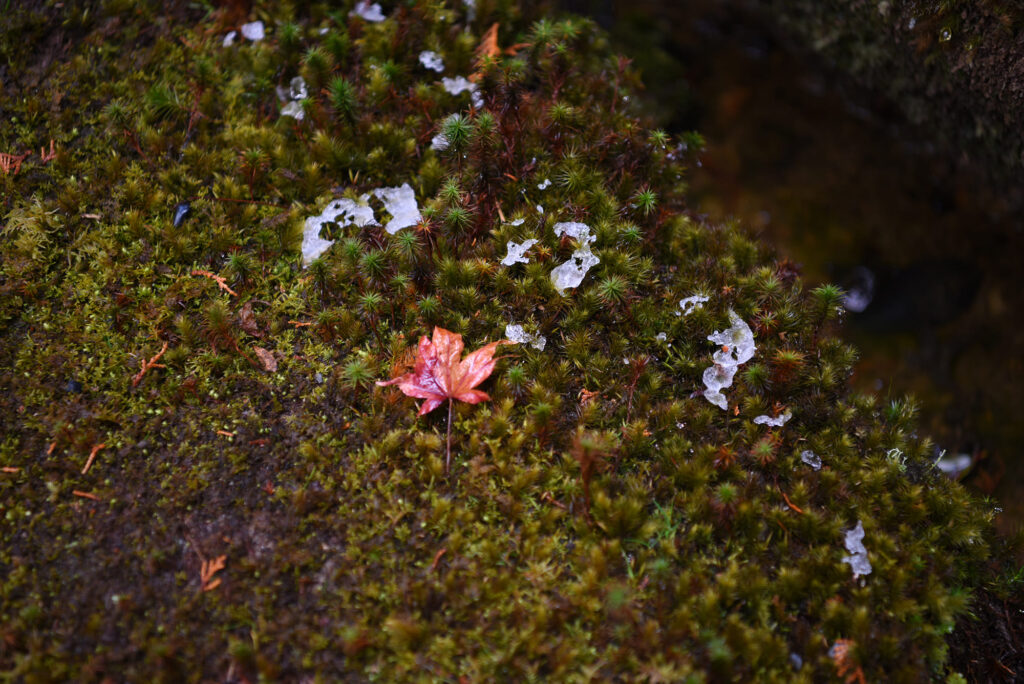
西芳寺の長い歴史のうちのほんの40数年間で、人が増え、物音が増え、気温が上がり、お庭にはより多くの日光が差すようになりました。それに、四季も失われつつあるではありませんか。おそらく、過去数百年よりも多くの変化が、この40数年で起きたのでしょう。誠意をもって西芳寺に務めてきた執事の声に耳を傾けることの大切さを実感します。
ある場所が特別に感じられるのは、そこに温かく迎え入れてくれる人がいるから。私がいつも西芳寺で歓迎されていると思えるのは、谷口さんという存在がいるからです。彼なしのお庭は、想像できません。
庭園は、大きな環境の中に存在しています。環境の変化による影響を自らの目で見た人の話を伺うと、環境破壊を止めるために、例えばお肉を食べる機会を減らしたり公共の交通機関を使ったり、私たちひとりひとりができる大きなことや小さなことは何かと考えさせられます。
ですがそれ以上に、人生をかけて尽力してきた方々がいるからこそ、庭園がそこに存在し続けているのだと気付かされます。西芳寺でいえば、庭師の方々はもちろんのこと、寺務員の皆さんも、参拝者の皆さんに意義のある時間を過ごしてもらおうと、そして西芳寺を次世代へ繋いでいこうと、尽力していらっしゃいます。
誰だって、ほかの人の働きを当然のこととして受け止めてしまうことはあるでしょう。しかし、人生はいかなる場面においても、他者との支えのうえに成り立っています。母親に産み落とされた瞬間から、棺桶に入れられる瞬間までです。ですから、今回のテーマは「人生で出逢うすべての人々へ感謝を伝えること」にしましょう。他者の支えと力があってこそ、私たちは各々の旅路における夢の実現に向けて、努力してゆけるのです。感謝の気持ちを抱けば抱くほど、人は幸せになれる。私がこれまでの人生で体感してきたことです。
谷口さんについてもう少し知りたい方は、こちらの記事をご覧ください。
Giving Thanks to the Stewards of Saihoji and to All
It is the winter season, one of my favorite times to see the garden and my guide today is Mr. Taniguchi who has been working for Saihoji for almost 40 years. When I first made a connection to Saihoji it was through him, and he has always been exceptionally kind. As we walk around the garden, we discuss the changes between the present garden and the past.
Here are some excerpts from his talk:
In the old days, the only way to visit Saihoji was by making an application by postcard. There were much fewer visitors in winter, and there were times when there was only one group of visitors. People would sometimes arrive unannounced and there were times when the weather was bad or on snowy days, when we went to greet the guests at the appointed time but no one showed up.
Thirty years ago, there were fewer houses around Saihoji and there was a large bamboo grove. At that time, when the cold wind blew and the bamboo grove swayed in autumn or winter winds, it looked as if the mountain itself was swaying, making it look so cold but beautiful. These days the amount of snow has decreased, and even now it feels cold, but not as cold as it used to be. In the old days the ground froze completely and in the pond the carp would huddle together for warmth near the spring water (Asahi no Shimizu). These days the summer is so hot and long and it seems the autumn is disappearing too.
In the past, when I would walk around the garden alone in the evenings during winter, it was often so quiet that it was almost scary. I remember hearing the sound of trains passing in the distance and the cheers from the Nishi-Kyogoku Stadium more clearly than you can now.Now there is more traffic in front of Saihoji, so there is more noise and sometimes I feel that noise pollution is becoming a problem.
We can tell from just a short 40 years in the long history of the garden that it is busier, noisier, warmer, and brighter. And the seasons are disappearing! Perhaps more changes have happened in 40 years than in several hundred. It shows the importance of listening to the voice of the steward who has devoted his life to serving the temple.
When a place feels special it is because someone always welcomes you. For me the person in Saihoji who has always made me feel welcome is Mr. Taniguchi, and I cannot imagine the garden without him.
And gardens exist within larger environments. Hearing a first-hand account of how the environmental changes have damaged the area motivates us to think of what small or large steps we can make as individuals to help stop the destruction of the environment, such as consuming less meat, using public transport etc.
But more than anything it makes us realize that gardens are always only there because of the people that devote their lives to them. In Saihoji that is the gardeners but also the staff who all work so hard to create the most meaningful experience for visitors and preserve Saihoji for future generations.
It is quite normal for us to take for granted the work of others. But every aspect of our lives is dependent on the support of others, from the moment our mothers bear us to the moment the undertaker places us in a coffin. So today’s theme is expressing thankfulness to all the people in our lives. It is because of their support and strength we can strive towards the fulfillment of our dreams on the journeys of our lives. And I know from my own experience that the more you feel thanks, the happier you will become.
You can read more about Mr. Taniguchi from here.
Peter MacMillan ピーター・J・マクミラン
翻訳家・詩人。株式会社 月の舟(制作・翻訳会社) 代表取締役。
2008年に英訳『百人一首』を出版し、日米で翻訳賞を受賞。2016年9月には英訳『The Tales of Ise』(伊勢物語)、2017年には英訳『One Hundred Poets One Poem Each(新訳)』の2冊がPenguin Booksより出版される。近著に『日本の古典を英語で読む』『英語で味わう万葉集』など著書多数。2019年より朝日新聞にて「星の林に」、2022年より京都新聞にて「不思議の国の和歌ワンダーランド 英語で読む百人一首」を連載。
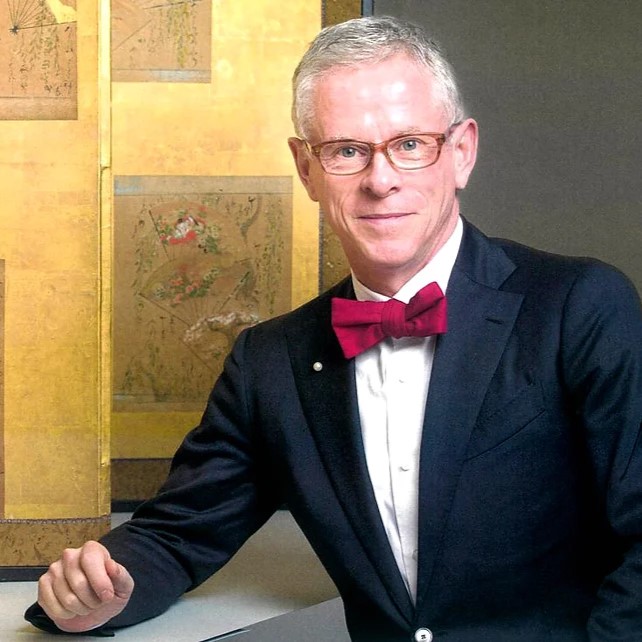
翻訳:福田安奈


